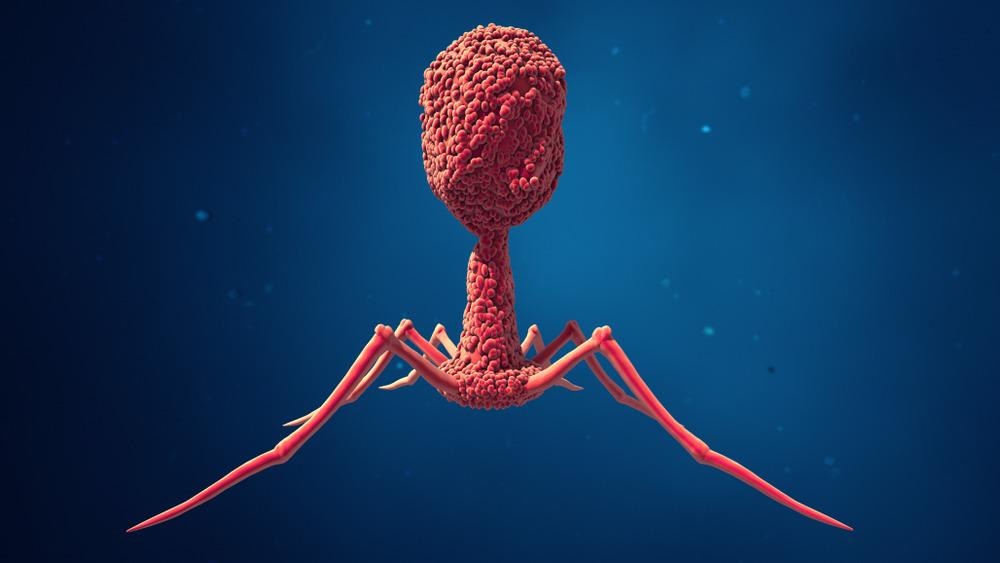Exciting research investigating a novel antibacterial candidate for water treatment has been undertaken and published as in the journal, Chemosphere.

Study: MXene–laden bacteriophage: A new antibacterial candidate to control bacterial contamination in water. Image Credit: Design_Cells/Shutterstock.com
Titanium carbide (Ti3C2) MXene nanofragments laden on bacteriophages through electrostatic bonding have been explored as a novel strategy for high-risk bacterial environments.
Critical Problems Affecting Wastewater
The widespread misuse of antibiotics provided for both humans and animals has been considered the most contributing factor of antibiotic outbursts within water sources. Additionally, antibiotics are predominantly not environmentally friendly and are not naturally metabolized or biodegraded in waste, enabling them to remain active in their environments, resulting in a negative change in the microbial community.
By destroying bacteria in these environments, antibiotics can increase the number of microbes carrying antibiotic resistance genes (ARG).
The dangers and significance of ARGs being increased in bacteria can be illustrated through their knock-on effect on the efficiency in antibiotic treatments against resistant pathogens in humans.
ARGs can modify and increase the resistant strains found in waterborne pathogens through the transference of resistance genes in bacteria via horizontal gene transfer mechanisms, enabling these pathogens to become difficult to treat when causing infections post-transference.
This detrimental issue has become a public health concern with the rise of ARGs due to the misuse of antibiotics in humans and animal welfare. Innovative nanotechnology solutions have therefore been researched for novel solutions.
MXene Materials
MXene is known as a two-dimensional (2D) transition metal carbide, nitride or carbonitride, which was first discovered in 2011. These materials have graphene-like structures which are made by exfoliating MAX phases, which are novel structural and functional ceramics with a layered structure.
Novel MXene materials present highly accessible hydrophilic surfaces compared to graphene and many 2D materials, which are hydrophobic in nature. Additionally, they also have sizeable specific surface areas, large surface functional moieties and high electron density, which has ultimately made this novel nanomaterial useful for various fields such as within photocatalysts, supercapacitors, purification, and as antibacterial agents.
The uses of MXene have already been established within literature such as for its antibacterial effects with researchers testing the efficacy of Ti3C2Tx MXene flakes against bacteria such as, Bacillus subtilis and Escherichia coli.
MXene flakes were found to have a higher antibacterial effect than graphene oxide as an antibacterial agent, illustrating its optimal candidacy for controlling bacterial contamination.
Interestingly, with bacteriophages, or bacterial viruses, able to treat bacterial infection, known as phage therapy, they have also been an effective candidate for combatting bacterial contamination, with advantages such as high specificity, and behavioral adaptability.
Additionally, their use within wastewater treatments that have recently been discovered has furthered their benefit for using an antibacterial agent.
The novel research published in Chemosphere has utilized both MXene nanofragments and bacteriophages to produce an innovative strategy that would provide enhanced control over bacterial contamination.
This advanced and novel combination of MXene and bacteriophage can enable bacterial host receptors’ recognition as well as cognitive antibacterial performance due to high specificity from the bacteriophage against targeted bacteria.
This combination aims to synergize the two key components, Ti3C2 MXene nanofragments and bacteriophages, through being bound, enabled by surface modification. This ensured specific targeting of bacteria due to the bacteriophages being used as well as oxidative stress and the destruction of the bacterial cell membrane due to the MXene nanofragments.
Both these critical antibacterial effects were utilized against bacteria in a straightforward step through this innovative combination. This is also advantageous as it can aid in reducing the side effects of conventional antibacterial treatments.
An Eco-Friendly Future with Novel Wastewater Strategies
With water contamination becoming a large public concern for the global population as well as the misuse of antibiotics being risen with increased time, antibiotic resistance genes have become a health hazard for waterborne pathogens. This can cause powerful and less treatable infections post-transference of these critical resistance genes.
Novel research which can aid in reducing this includes combining bacteriophages and innovative nanotechnology using MXene nanofragments to enhance the efficacy of antibacterial agents and control the contamination of bacteria in wastewater.
While novel wastewater solutions can have limitations from toxicity and compatibility with human health, other complications can also include mass incorporation within countries, which may require governmental aid to prioritize innovative public health policies.
This is significant as without novel interventions for water purification, human health can be compromised through powerful and detrimental bacteria strains that can constantly mutate and evade effective treatment and ultimately cause potential pandemics./p>
Continue reading: Antiviral Activity of Intermetallic Nanoparticles Incorporated into Polymeric Fibers.
Reference
Mansoorianfar, M., Shahin, K., Hojjati–Najafabadi, A. and Pei, R., (2021) MXene–laden bacteriophage: A new antibacterial candidate to control bacterial contamination in water. Chemosphere, p.133383. Available at: https://www.sciencedirect.com/science/article/pii/S0045653521038571
Further Reading
Ran, J., Gao, G., Li, F., Ma, T., Du, A. and Qiao, S., (2017) Ti3C2 MXene co-catalyst on metal sulfide photo-absorbers for enhanced visible-light photocatalytic hydrogen production. Nature Communications, 8(1). Available at: https://doi.org/10.1038/ncomms13907
Srivastava, A., Verma, A. and Prajapati, Y., (2021) Effect of 2D, TMD, perovskite, and 2D transition metal carbide/nitride materials on performance parameters of SPR biosensor. Handbook of Nanomaterials for Sensing Applications, pp.57-90. Available at: https://doi.org/10.1016/B978-0-12-820783-3.00005-1
Disclaimer: The views expressed here are those of the author expressed in their private capacity and do not necessarily represent the views of AZoM.com Limited T/A AZoNetwork the owner and operator of this website. This disclaimer forms part of the Terms and conditions of use of this website.